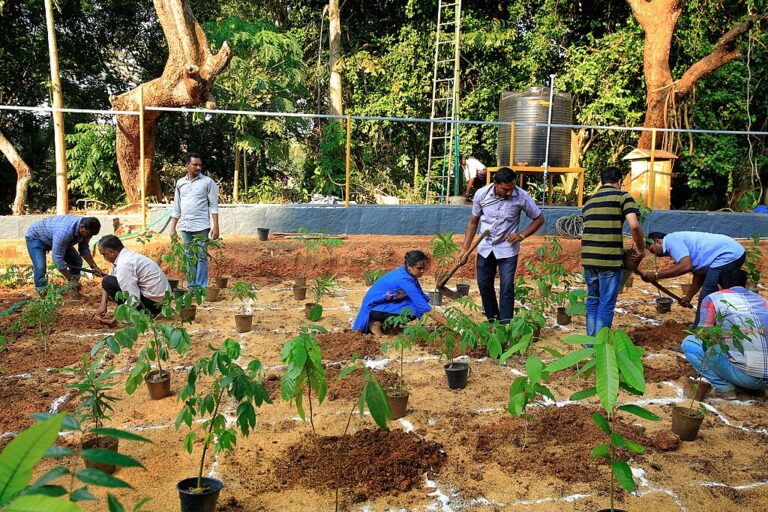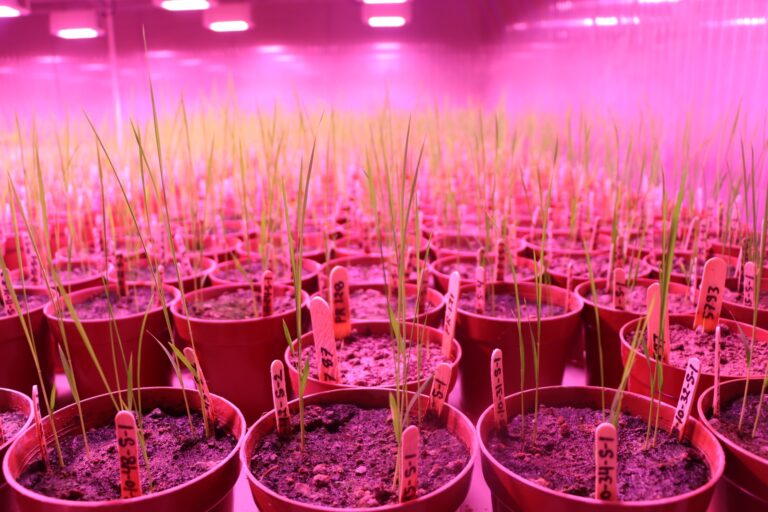- In the Lancet Commission report on the ‘Global Syndemic of Obesity, Undernutrition and Climate Change’ 43 authors from 14 countries issued an urgent call to action tackle the pandemics of obesity, undernutrition and climate change that constitute ‘The Global Syndemic’.
- Resuscitating traditional peoples’ knowledge of sustainable food systems, use of biodiversity, worldviews, and collective approaches will not only strengthen their ability to meet the challenges for their own people but also provide ways forward for all humanity to meet the challenges of the syndemic.
- Transportation systems, urban design, and land use are interconnected systems that have an enormous effect on climate change and obesity through their effects on greenhouse-gas emissions, physical activity, and diet.
Reviving traditional peoples’ knowledge of sustainable food systems and use of biodiversity could act as a bulwark against the triple threat of obesity, undernutrition and climate change, described as “three of the gravest threats to human health and survival” in a new report.
In the Lancet Commission report on the ‘Global syndemic of obesity, undernutrition and climate change’ 43 authors from 14 countries issued an urgent call to action tackle the pandemics of obesity, undernutrition and climate change that constitute ‘The global syndemic’.
The major systems driving ‘The global syndemic’ are food and agriculture, transportation, urban design, and land use, underscores the report, whose commissioners propose nine broad recommendations, including attention to sociocultural contexts (such as in the context of indigenous communities) to fight the pandemics as one.
The UN estimates that more than 370 million self-identified indigenous and tribal people live in some 90 countries representing as many as 5000 diverse cultures. Even though they constitute only five percent of the world’s population, they account for 15 percent of the global poor.
The study emphasises that “resuscitating traditional peoples’ knowledge of sustainable food systems, use of biodiversity, world views, and collective approaches will not only strengthen their ability to meet the challenges for their own people but also provide ways forward for all humanity to meet the challenges of the syndemic.”

Harriet Kuhnlein, founding director of the Centre for Indigenous Peoples’ Nutrition and Environment, who is one of the commissioners of the report, observed that indigenous people’s knowledge is valuable for biodiversity conservation, especially for knowing and protecting species resilient to climate change.
“Many species known in local areas of indigenous communities provide valuable alternatives to refined grain products that foster obesity and lead to malnutrition in the absence of micronutrients that are found in more wholesome grains, pulses, and locally available vegetables,” Kuhnlein, professor emerita, McGill University’s School of Human Nutrition, told Mongabay-India.
Custodians of traditional knowledge in crisis
Despite being custodians of many traditional knowledge bases, worldwide these communities have experienced dispossession and destruction of their traditional lands and territories, the report adds.
The most severe effects of climate change are documented for lands occupied and depended upon by indigenous peoples. For example, the severe and long-term desertification and drought in Subsaharan Africa and East Africa regions that compromises herd viability of pastoralists and the rising sea levels in the coastal zones of Pacific Island nations that flood traditional farm area.
Read more on dietary diversity, behaviour change in Indians being a key to better health and environment.
In addition, indigenous communities suffer the brunt of malnutrition and non-communicable diseases disproportionately.
“Recent international data compilations reveal that obesity and non-communicable diseases occur more often among Indigenous populations compared to other segments of populations in developed countries such as Canada and the United States; in less developed countries Indigenous Peoples suffer disproportionately from more stunting and undernutrition,” explained Kuhnlein.
There are exceptions in India. For example, tribal people in Nagaland who still maintain broad use of their locally harvested biodiversity have less malnutrition than shown in the India-national data, pointed out Kuhnlein.
The key to tapping the diversity in tribal cultures in India and distilling into policy is by engaging with partners in the indigenous communities for local agriculture of biodiverse food resources.
“Indigenous partners provide the information and know-how for agriculture of these species, and should also be partners in income from sales from these crops and products from them,” elaborated Kuhnlein.

Reorienting transport for climate change mitigation, health
Shifalika Goenka of the Public Health Foundation of India, one of the authors of the report also underscored the importance of making health an integral part of the planning process for laws for India, in the way we live, what we eat, move, work and play.
In India, 38 percent of the children under five are stunted (too short for their age – an indicator of chronic undernutrition); 21 percent are wasted (too thin for their height; acute under nutrition); and 36 percent are underweight and 58 percent are anaemic, as per the National Family Health Survey data.
The Lancet report reinforces this message in stating that transportation systems, urban design, and land use are interconnected systems that have an enormous effect on climate change and obesity through their effects on greenhouse-gas emissions, physical activity, and diet.
Transportation systems and community designs that support active transportation, reduced car use, and access to healthful foods are triple-duty actions for the global syndemic.
“Radical changes are required in the country’s laws pertaining built environments, roads and transport systems including public transport,” said Goenka.
For example, some India-specific measures urgently required are green spaces open to the public within 0.5 km radius from where people stay and work and weaving it within the land use laws within urban and semi-urban areas.
“Increase the network, safety, connectivity and comfort of public transport. Public transport is known to enhance health, lower obesity, and improve health and save on the whole fossil fuel. Sports, playgrounds, potable water, in schools and participation will enable overall health and lower obesity,” Goenka said.
Read more on the lack of an ecosystem for cyclists in India.
A 2018 Centre for Science and Environment analysis “The Urban Commute” that ranked 14 Indian cities on the basis of overall emissions and energy use from the urban commute, scored Kolkata and Bhopal high for clean transport systems.
Kolkata’s public transport culture, compact city design, high street density, short travel distances and restricted availability of land for roads and parking are among the good practices while Bhopal has worked on building its bus and bicycle programmes with an enhanced bus fleet, a bus rapid transit system and public bike sharing schemes. Even transit-oriented development policy has progressed here, the analysis elaborated.

On India’s “explosive motorisation”, the analysis notes that the speed at which motorisation is growing is evident from the fact that initially, it took 60 years (1951 to 2008) for India to cross the mark of 105 million registered vehicles. But thereafter, the same number was added in a mere six years (2009–15).
Ashish Verma, associate professor, Transportation Systems Engineering, Department of Civil Engineering, Indian Institute of Science, Bengaluru, who was not associated with the study reiterated the reality of climate change and the choices we make today will largely determine the trajectory of future climatic changes.
“Climate change is real and choosing a sustainable transport system will make a huge difference, as future climate change, will be largely determined by choices society makes. Although climate change has the potential to impact human health, we can prepare ourselves to adapt to these changes or take mitigation measures,” Verma told Mongabay-India.
“Unfortunately, the ground level policies, especially with respect to urban transport in India, are predominantly biased and focused towards road-based infrastructure improvements, which is the primary reason for high negative externalities of transportation that we are experiencing today,” Verma said.
For example, the announcement of the construction of the elevated corridor project in Bengaluru has been opposed by a section of experts and civil society organisations on the ground that it will only add to concretisation of the city and ramp up carbon footprint.
In a report on the sustainability analysis of the proposed elevated corridors (in comparison with metro rail system), Verma and co-author write: “Elevated corridor construction will not yield any improvement to the city’s traffic congestion and is therefore not a sustainable solution and will make the city less liveable.”
“Although bus and metro rail system emit a high amount of carbon dioxide their high occupancy levels leads to less per capita emissions (less contribution to emissions by public transport users.”

Banner image: Children eating kheer and puri, Chambal, India. Photo by Yann Forget/Wikimedia Commons.













